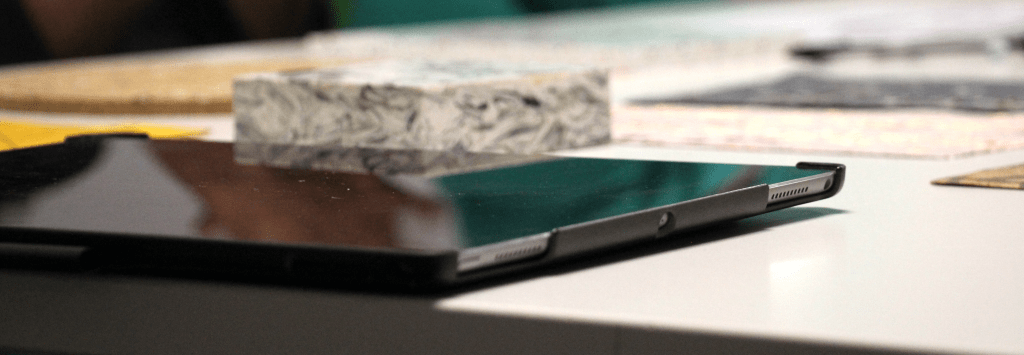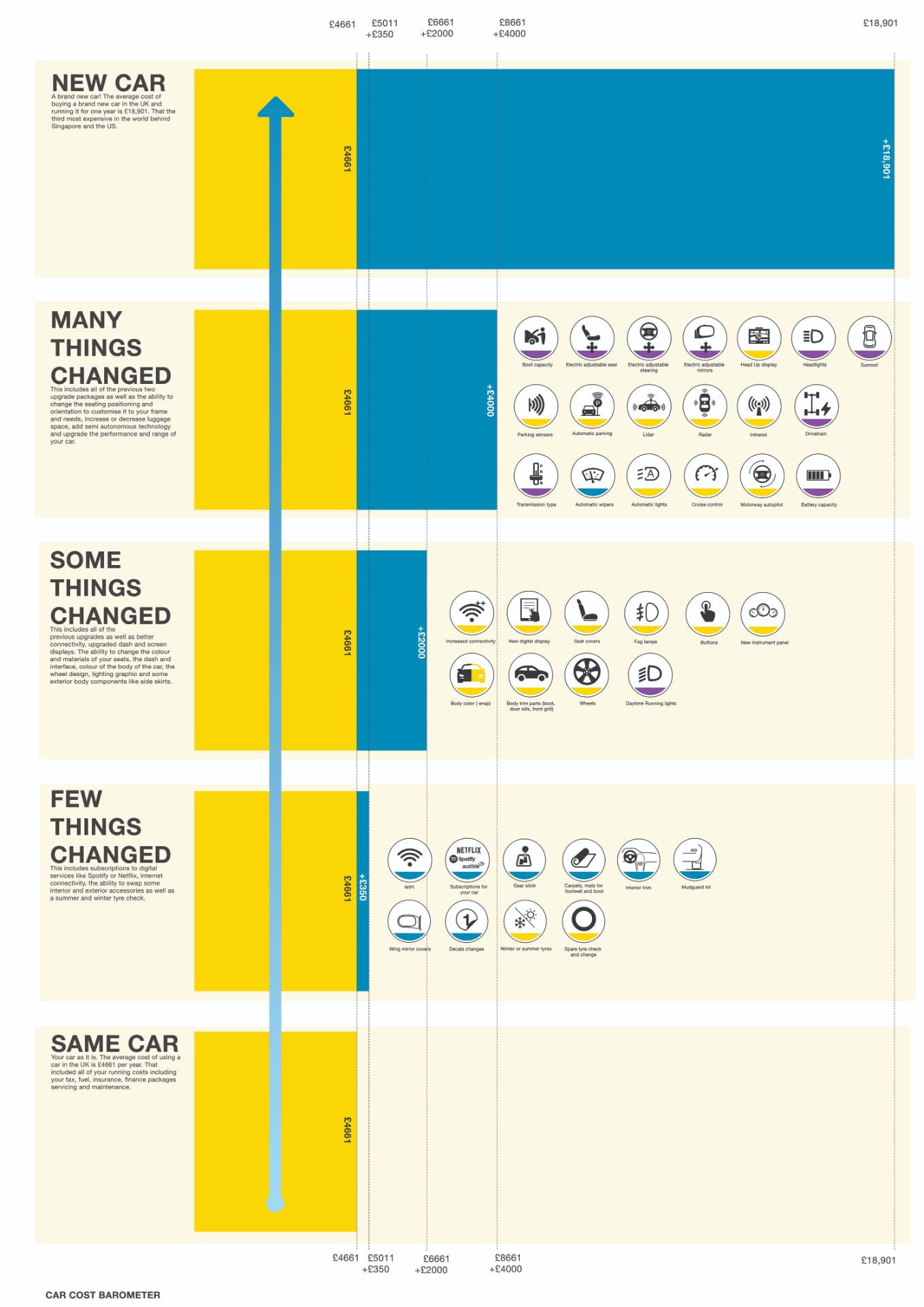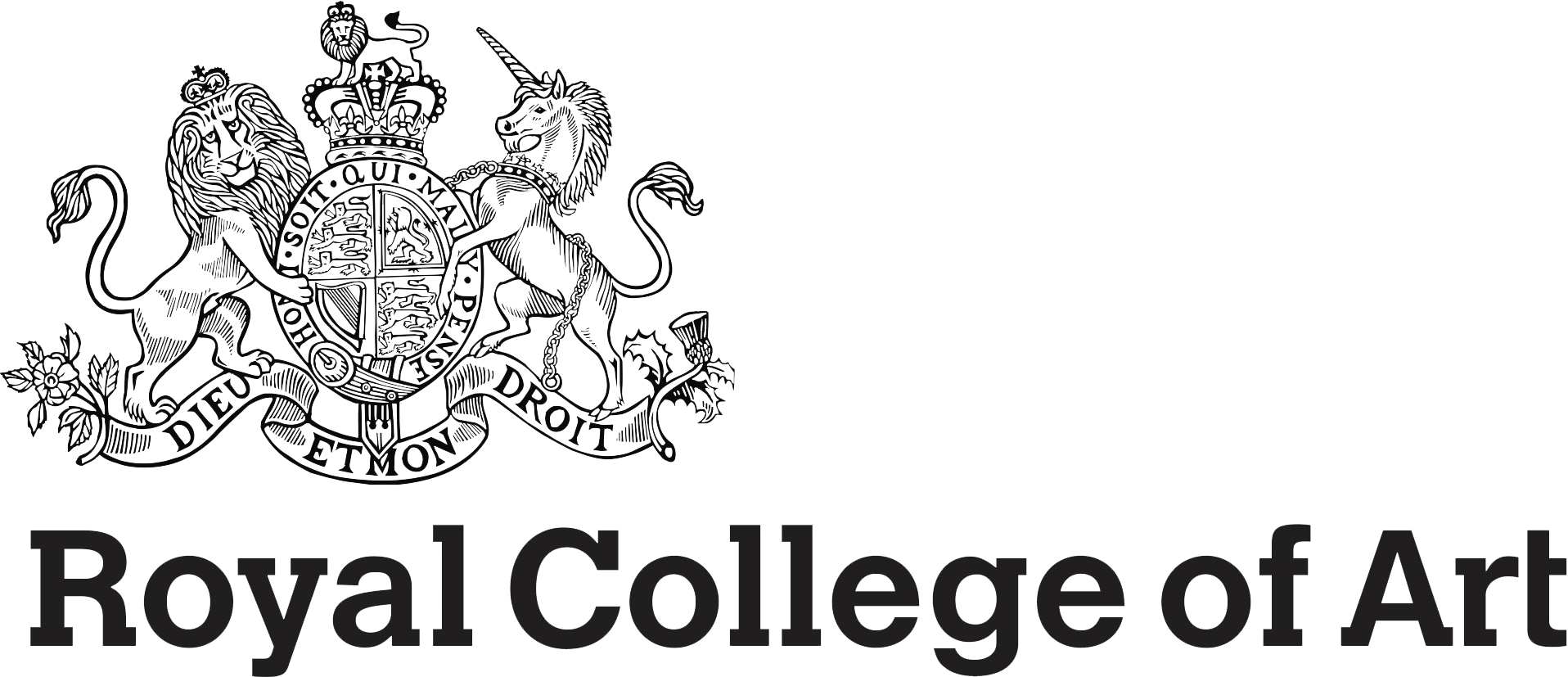10 User Study for Circular Vehicle Upgrading

Tablet and materials for the demonstration of vehicle customisation.
We conducted three consecutive user engagement workshops after gathering public feedback on the concepts demonstrated through the videos and interactive displays that we exhibited at the London Design Festival 2018. This was to allow us to conduct research into people’s driving related rituals and user test the prototypes we had made.
We found that people want to change their cars every three to four years for various reasons. Offering a subscription-based service that would enable owners to alter and refine their driving experience, would provide opportunities for automotive companies to increase revenue, as well as facilitating the recovery of vehicle parts and materials to support a circular economy.
We conducted this workshop to gain a better understanding of users needs and their preferences in relation to a possible service package. Additionally we were able to user-test an interface prototype designed by the team for personal car interior customisation.
In the first session, the five participants discussed their current car upgrade and customisation preferences. They said that the main reason for getting a new car was depreciation in value, with car mileage and warranty contributing to this. The participants described their desire for a new car as – wanting a new, reliable product with improved technology to support their driving performance. Whilst having this discussion they were seated around a table on which we had placed images showing examples of customised and upgradeable car parts for inspiration.

Vehicle upgrade ‘Barometer-style’: service packages containing a different set of upgrades and customisation options arranged in relation to cost.
Next we showed them a poster depicting a graphic model of various service options. These were arranged on a barometer-style system with indicators ranging from Same car, to Few things changed, to Some things changed, to Many things changed and lastly New Car. Each of these represented service packages containing a different set of upgrades and customisation options and were arranged in relation to cost. Participants selected the package they preferred and explained their reason for doing so to the group.
Circular Vehicle Upgrading workshop activities.
They were then asked to build their ideal service package using the depictions of car parts that we had drawn as symbols on small cards, with a colour coded edge. After they had built their desired packages we revealed the system of colour coding, which specified the cost of each individual service or component. The number of upgrades they had chosen varied between ten and twenty four. Most popular were: adjustable electric seats and mirrors, automatic lighting, radar, parking sensors, Wi-Fi connectivity, carpets and mats. After the cost had been revealed they then adjusted their selections to reduce the cost. Most were happy to pay around £4,000 with one stating that she would pay £6,900 to upgrade her car per annum. We did some research on approximately how much people spend each year to run a car. The average cost of having a car in the United Kingdom is £4,661 including tax, fuel, insurance, finance packages and maintenance. The amount people are willing to pay will partially cover the maintenance costs and upgrading of the basic car functions. We then discussed the frequency of when the upgrades would occur and that some would be relevant at different periods of time and depend on the existing features of the vehicle.
Participants building service packages and testing the customisation application.
In the final session we asked participants to test an interface design for the selection and customisation of in-car materials that we had developed for the Motoring Makeovers demo. Tablets were installed with software which allowed people to select their preferences. By hovering the device over a variety of material samples, information was automatically displayed on the screen, detailing the method of manufacture, country of origin and recycling opportunities. We asked them what information they would like to receive and their main responses were concerned with the durability of the material, if it was easy to clean, if it was environmentally considerate and if it was ethically sourced. They were all very enthusiastic about playing an active part in the design of their car and liked to have a lot of choices available if they were delivered in the right way. They found the interface we had developed easy to use and they were very receptive to be given information about the materials. Touching, feeling and smelling the materials was mentioned by participants as being important in order to make a correct and informed choice.
In conclusion the participants were very interested in having the opportunity to upgrade and customise their vehicle. What needs to be explored next is what creating this service would involve and what the right price points would be for users to upgrade rather than purchase a new car.
Previous Chapter
Next Chapter
